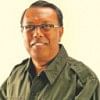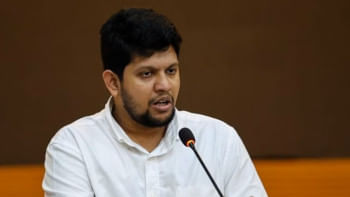Seaweed door to blue economy

Dhaka University's Botany Professor Dr Abdul Aziz invited me to visit Cox's Bazar a few years back. I've been to Cox's Bazar many times. I asked him what new he would show me. He answered, "Come. I am waiting for you with something new." Two years later I could finally take the trip to Cox's Bazar. Although Dr Aziz wasn't there he made sure that I could see what he wanted me to.
Sea is a unique reservoir. There are resources with limitless possibilities. Seaweed is one such precious blessing of the sea. It is a special cash crop in Japan, China, Korea, Philippines and many other countries. Dr Aziz wanted to show me the Seaweed Cultivation Project in Cox's Bazar.
Beside Cox's Bazar airport, on the beach of Nuniyachhara of Maheshkhali channel, I saw this unique activity of seaweed farming. Planes are coming and going up and down the runway. Beside it, research on a new commercial cultivation is taking place. Over there, I talked to seaweed farmer Md Karim. He was very busy with seaweed. High tide was coming. He had to put the seaweed in specific places before that.
Still, small ethnic groups eat seaweed as food item. Mohammad Karim used to collect seaweed from Maheshkhali channel and sell it to Rakhain community. “I saw seaweed grows three or four times in 10-15 days,” said Karim. It is giving him a good living, you would say.
“So, I decided to take it as profession,” added Karim. Karim has learned seaweed cultivation method through taking training from BARI (Bangladesh Agricultural Research Institute). Now his mother and sister do this work too.
History says, in 1670, the first cultivation of seaweed started in Japan's Tokyo. Its commercial cultivation started in 1940. Along with Japan, Philippines, Vietnam, Thailand and many other Asian countries started cultivating it. Seaweed is a great source of various vitamins, minerals and iodine. Japan produces seaweed worth two billion dollar every year. According to FAO, 25 thousand tonnes of seaweed is produced all over the world. Its commercial value is 6.5 billion dollar. Bangladesh, having a coastline stretching 710 km, bears a good prospect of blue economy revolution through seaweed cultivation.
I went to Japan in 2005 to film an episode of Hridoye Mati O Manush. Over there, I saw seaweed being cultivated widely. I saw seaweed's presence in many restaurant foods of Japan. I witnessed the same in Netherlands's North Sea's bank, in 2015.
Bangladesh's Saint Martin Island is a great source of naturally produced seaweed. As far as we know, there are 215 species of seaweed of 102 groups. However, due to the crowd of visitors and local's negligence, many species of naturally produced seaweed are getting extinct gradually.
Hypnea species of seaweed is being cultivated in tidal coastline of Nuniyachhara beach. On-Farm Research Division of BARI has given training to farmers here on seaweed cultivation. Before, farmers used to take out the seed while collecting seaweed. As a result, seaweed used to stop growing. Now, they are aware of it. Seed of a dream has been planted among these people. They are getting a new source of income. Not only men, 50 women are cultivating this cash crop after taking training. Limitless employment opportunities are being created.
Seaweed farmer Md Karim showed me the financial prospect of seaweed cultivation. Raw seaweed is worth Tk 2,000 per maund and dry seaweed Tk 6000-7000. Seed is Tk 70-80 per kg. Md Karim earns Tk 2.5 lakh every year from seaweed cultivation for four months. Farmer Mujibur Rahman says, he is hopeful that seaweed cultivation will change his fortune as he has started getting profit.
Rakhain tribe's Nini, Marsha and Mumu were present at the location. They showed me how to eat seaweed. It can be eaten fresh as salad after cleaning. They have it with rice, mixing cooked dry fish, onions and chili along. Besides, it can be eaten with soup, sauce, pitha, chanachur and many other items. It is very delicious!
Chief Scientific Officer of this project Dr ASM Mahbubur Rahman told me about the possibilities of seaweed and its cultivation method. He told me that it is a great resourceful food. Some part of it can be used at food processing industry.
Senior Officer Moshtak Ahmed said seaweed has plenty of antioxidants, beta carotene plus vitamin A, vitamin B-12, vitamin C, D, E and K. It can be a unique food item as vegetable. Cultivated seaweed can be exported too.
I went to Cox's Bazar's seaweed laboratory from Nuniyachhara. Research on seaweed is taking place there. Scientific Officer Omar Faruq Masuk and Mostafizur Rahman were working. Tissue culture and light experiments were going on. There was also an ultra violet chamber. Many experiments were going on regarding seaweed's seed production.
After coming back to Dhaka, I talked to Professor Aziz. About seaweed's industrial possibilities, he said, "If you can cultivate seaweed on 100 acres of coastal land, you can run a food processing factory with the amount of seaweed produced there." He also added, "The agar that we import from abroad in tonnes for pathology and medicine industry, we will be able to produce it ourselves."
Dear readers, seaweed can meet our need of nutrition. Alongside, it can be a great source of earning foreign currency. Cultivating seaweed can be an alternative employment source along with catching sea fish. Especially for women, it can be a profitable sector. A huge industry with limitless possibilities can grow. Along with the government, if industrial entrepreneurs of related fields come forward, they can open a possible door of a new world in blue economy which will enrich our national economy. Seaweed cultivation can be a sector of durable economy along with ensuring food security.

 For all latest news, follow The Daily Star's Google News channel.
For all latest news, follow The Daily Star's Google News channel. 



Comments